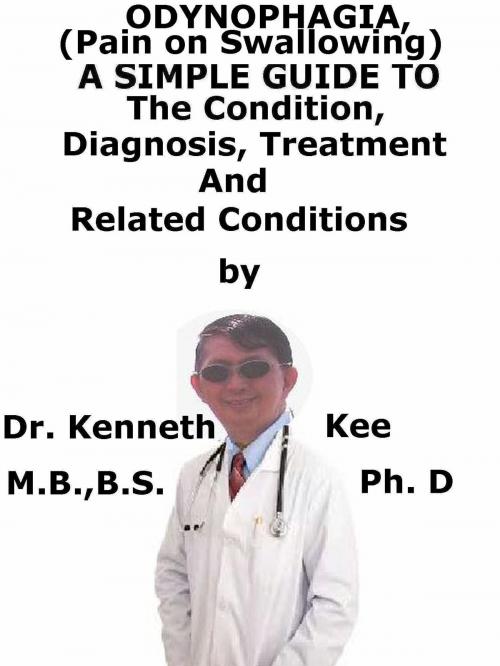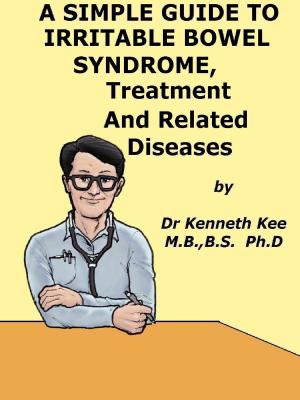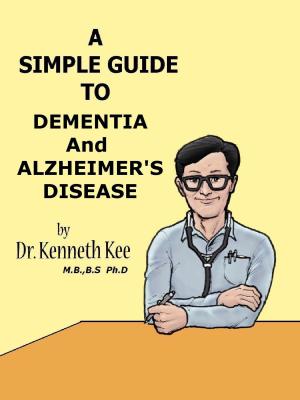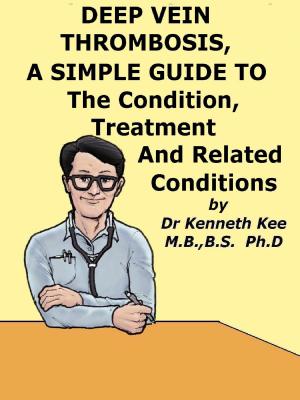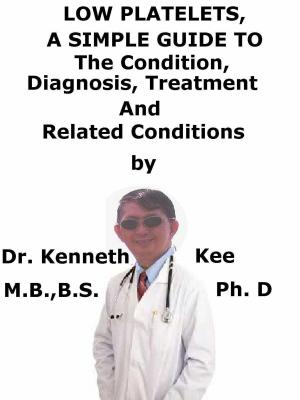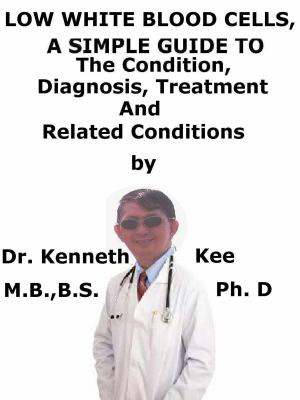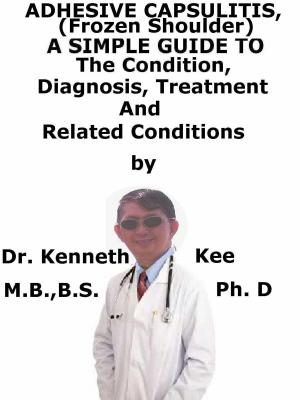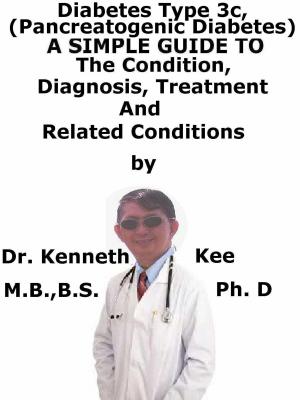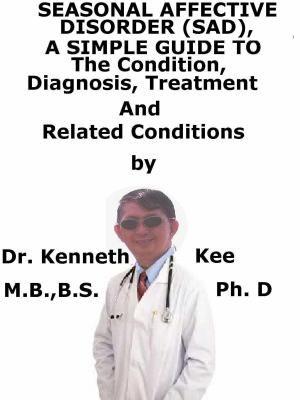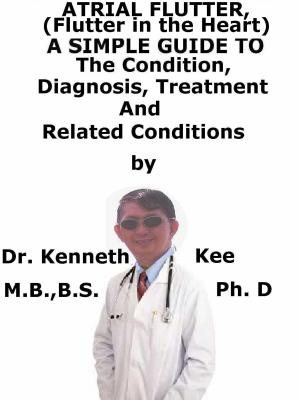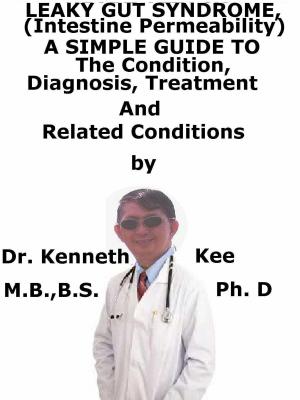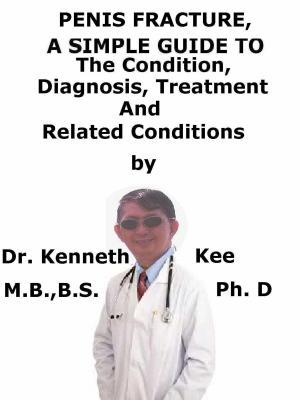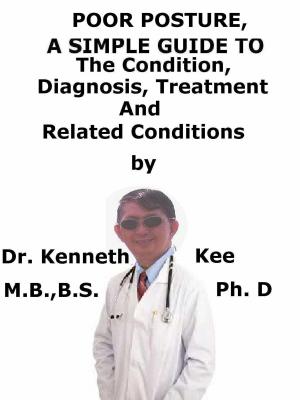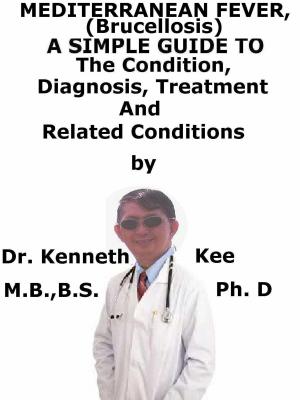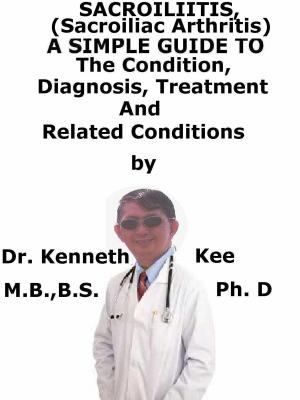Odynophagia, (Pain on Swallowing) A Simple Guide To The Condition, Diagnosis, Treatment And Related Conditions
Nonfiction, Health & Well Being, Medical, Specialties, Internal Medicine, Gastroenterology, Health, Ailments & Diseases, Abdominal| Author: | Kenneth Kee | ISBN: | 9780463582756 |
| Publisher: | Kenneth Kee | Publication: | June 6, 2018 |
| Imprint: | Smashwords Edition | Language: | English |
| Author: | Kenneth Kee |
| ISBN: | 9780463582756 |
| Publisher: | Kenneth Kee |
| Publication: | June 6, 2018 |
| Imprint: | Smashwords Edition |
| Language: | English |
This book describes Odynophagia, Diagnosis and Treatment and Related Diseases
Odynophagia (Painful swallowing) is any form of pain or discomfort when swallowing.
The patient may feel it high in the neck or lower down behind the breastbone.
Most often, the pain feels like a strong sensation of squeezing or burning.
Pain can be felt in the mouth, throat, or esophagus.
The patient may feel pain on swallowing while drinking or eating food.
Occasionally swallowing disorders, known as dysphagia, can accompany the pain, but odynophagia is often a disorder of its own.
Painful swallowing may be a symptom of a serious disorder.
There is a spectrum of possible causes from self-limiting illness (e.g., tonsillitis) to carcinoma.
Causes
Odynophagia may occasionally be related to a minor disorder, such as the common cold.
In such cases, painful swallowing will recover on its own with time.
Chronic painful swallowing may be linked to another underlying cause.
- Cancer: Sometimes chronic painful swallowing is an early sign of esophageal cancer.
Esophageal cancer may result from long-term smoking, alcohol abuse, or persistent heartburn. - Candida infection: This is a form of fungal infection that may happen in the mouth.
It can expand and produce esophageal symptoms like painful swallowing. - Gastroesophageal reflux disease (GERD): This occurs from the lower sphincter in the esophagus not closing properly.
As a result, stomach acid leaks back into the esophagus.
The patient might have GERD if he or she has painful swallowing along with other symptoms, such as heartburn or chest pain. - HIV: Esophagus disorders happen often in people with HIV.
Symptoms: - Pain when swallowing solids, liquids, or both
- The pain is constant or does it come and go
- The pain is getting worse
- Difficulty swallowing
- Sore throat
Diagnosis:
Odynophagia is normally diagnosed with an endoscopy.
MRI scanning may also be necessary before any surgery is indicated - e.g., if there is esophageal carcinoma
Videofluoroscopy is the radiological investigation of choice when 'difficulty swallowing' rather than 'food sticking' is the presenting symptom and aspiration is suspected
Treatment
The precise treatment plan for odynophagia is dependent on the underlying cause.
Medicines
Depending on the underlying medical disorder, painful swallowing may be resolved with medicines.
Prescription medicines used to treat GERD can help prevent stomach acid from creeping back up into the pharynx and esophagus.
Consecutively, the patient may notice improvements in pain when the patient swallows.
Medicines may also be given in treating other underlying causes, such as HIV and infections.
Candida infections must be treated with antifungal medicines.
Surgery
In cases of esophageal cancer or tumors, the doctor may advise surgical removal of these cells.
This treatment may also be used for GERD if medicines do not help the disorder.
Spontaneous Recovery
If the doctor does not identify any underlying medical issue, painful swallowing might recover on its own with time.
This is frequent after having cold or severe allergies.
Home Treatment
Eat slowly and chew the food well.
Eat pureed foods or liquids if solid foods are difficult to swallow.
Avoid very cold or very hot foods if they make the symptoms worse.
General
The patient may require chewing well or liquidizing food.
Surgical
Strictures may be treated with endoscopic dilation (either using bougies or inflatable balloons).
If esophageal carcinoma is diagnosed, staging will decide whether curative surgery and chemotherapy are suitable
Endoscopic injection of the esophageal sphincter with botulinum toxin is given
TABLE OF CONTENT
Introduction
Chapter 1 Odynophagia
Chapter 2 Causes
Chapter 3 Symptoms
Chapter 4 Diagnosis
Chapter 5 Treatment
Chapter 6 Prognosis
Chapter 7 Dysphagia
Chapter 8 Gastroesophageal Reflux Disease
Epilogue
This book describes Odynophagia, Diagnosis and Treatment and Related Diseases
Odynophagia (Painful swallowing) is any form of pain or discomfort when swallowing.
The patient may feel it high in the neck or lower down behind the breastbone.
Most often, the pain feels like a strong sensation of squeezing or burning.
Pain can be felt in the mouth, throat, or esophagus.
The patient may feel pain on swallowing while drinking or eating food.
Occasionally swallowing disorders, known as dysphagia, can accompany the pain, but odynophagia is often a disorder of its own.
Painful swallowing may be a symptom of a serious disorder.
There is a spectrum of possible causes from self-limiting illness (e.g., tonsillitis) to carcinoma.
Causes
Odynophagia may occasionally be related to a minor disorder, such as the common cold.
In such cases, painful swallowing will recover on its own with time.
Chronic painful swallowing may be linked to another underlying cause.
- Cancer: Sometimes chronic painful swallowing is an early sign of esophageal cancer.
Esophageal cancer may result from long-term smoking, alcohol abuse, or persistent heartburn. - Candida infection: This is a form of fungal infection that may happen in the mouth.
It can expand and produce esophageal symptoms like painful swallowing. - Gastroesophageal reflux disease (GERD): This occurs from the lower sphincter in the esophagus not closing properly.
As a result, stomach acid leaks back into the esophagus.
The patient might have GERD if he or she has painful swallowing along with other symptoms, such as heartburn or chest pain. - HIV: Esophagus disorders happen often in people with HIV.
Symptoms: - Pain when swallowing solids, liquids, or both
- The pain is constant or does it come and go
- The pain is getting worse
- Difficulty swallowing
- Sore throat
Diagnosis:
Odynophagia is normally diagnosed with an endoscopy.
MRI scanning may also be necessary before any surgery is indicated - e.g., if there is esophageal carcinoma
Videofluoroscopy is the radiological investigation of choice when 'difficulty swallowing' rather than 'food sticking' is the presenting symptom and aspiration is suspected
Treatment
The precise treatment plan for odynophagia is dependent on the underlying cause.
Medicines
Depending on the underlying medical disorder, painful swallowing may be resolved with medicines.
Prescription medicines used to treat GERD can help prevent stomach acid from creeping back up into the pharynx and esophagus.
Consecutively, the patient may notice improvements in pain when the patient swallows.
Medicines may also be given in treating other underlying causes, such as HIV and infections.
Candida infections must be treated with antifungal medicines.
Surgery
In cases of esophageal cancer or tumors, the doctor may advise surgical removal of these cells.
This treatment may also be used for GERD if medicines do not help the disorder.
Spontaneous Recovery
If the doctor does not identify any underlying medical issue, painful swallowing might recover on its own with time.
This is frequent after having cold or severe allergies.
Home Treatment
Eat slowly and chew the food well.
Eat pureed foods or liquids if solid foods are difficult to swallow.
Avoid very cold or very hot foods if they make the symptoms worse.
General
The patient may require chewing well or liquidizing food.
Surgical
Strictures may be treated with endoscopic dilation (either using bougies or inflatable balloons).
If esophageal carcinoma is diagnosed, staging will decide whether curative surgery and chemotherapy are suitable
Endoscopic injection of the esophageal sphincter with botulinum toxin is given
TABLE OF CONTENT
Introduction
Chapter 1 Odynophagia
Chapter 2 Causes
Chapter 3 Symptoms
Chapter 4 Diagnosis
Chapter 5 Treatment
Chapter 6 Prognosis
Chapter 7 Dysphagia
Chapter 8 Gastroesophageal Reflux Disease
Epilogue
